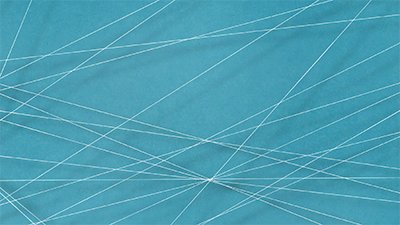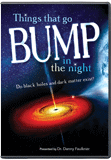Beech Leaf Folding Project
Try a complex fold based on the beech leaf that is used for maps.
To adopt the Miura fold for use in devices such as solar panels and maps, we need a more complex pattern that puts several leaf folds together and parallel to each other. The folding process is similar, but a bit more difficult:
- Take a rectangular sheet of paper and fold it into strips like an accordion.
These folds are the same as the stem fold in the leaf project.

- For best results, mark the folded strip into equal sections so you can fold your map into equal "squares."
- Starting at one end, make accordion folds all along the paper strip. Be
sure to make all the folds parallel to each other and at an acute angle to the
edge of the strip. These folds are like the vein fold in the leaf, but in this
case, a 60-degree angle may be a little too acute—80 or even 85 degrees will
probably work better. The key is to be careful not to make the vein folds perpendicular
to the stem fold.
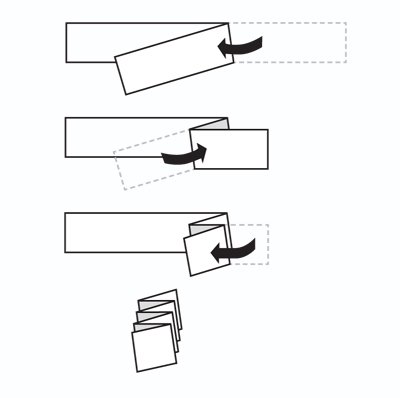
- You may find the final step easier if you repeat Step 3, creasing all the accordion folds (the "veins") in the opposite direction before continuing to Step 5.
- Now unfold the whole sheet and notice that each straight "stem" line is
folded the same direction all along its length, either as a ridge fold or a
valley fold; and each zigzag "vein" line changes from a ridge to a valley or
vice versa whenever it crosses a stem line. In Step 6, you will reverse this.
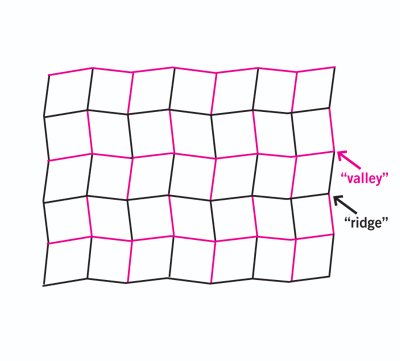
- Reverse the appropriate folds so that each zigzag vein line is folded the
same way across its length and parallel vein lines alternate from ridge to valley.
At the same time, each straight stem line should be refolded so that it changes
from ridge to valley or vice versa each time it crosses a vein line.
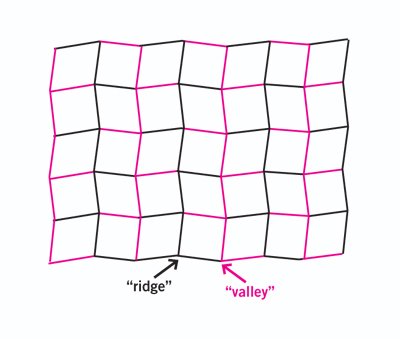
One thing you will notice is that it can be difficult to change the directions
of the folds, but with practice, you should be able to figure it out. This difficulty
points to one shortcoming of a map that's folded this way: you can't unfold
just a section of it; you have to fold or extend all of it at once. However,
that's the reason this fold is such a good design for a leaf or solar panel:
a pull or push along a single axis will extend or collapse the entire surface.
That's a much more efficient motion than the many different movements required
to open a surface folded conventionally at right angles, like a standard road
map.
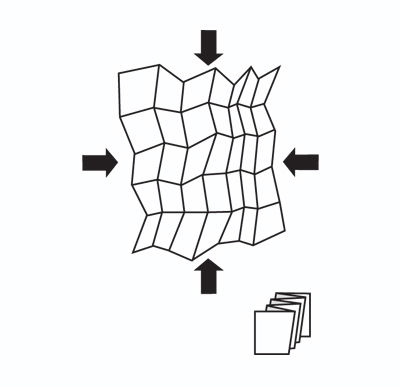
Recommended Resources

Answers in Genesis is an apologetics ministry, dedicated to helping Christians defend their faith and proclaim the good news of Jesus Christ.
- Customer Service 800.778.3390
- © 2024 Answers in Genesis



